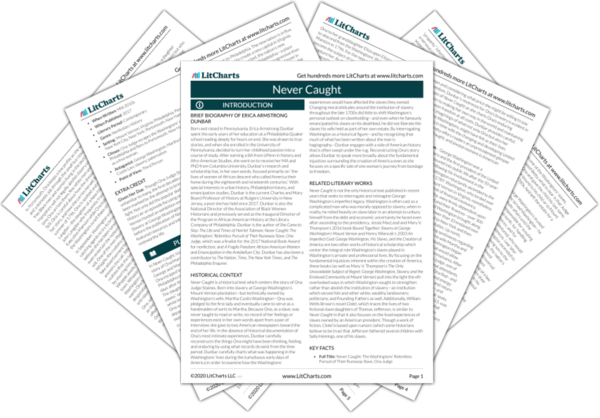Dunbar shows how quickly the Executive Mansion fills up in order to highlight the great melting pot of people and experiences who will populate it. This will likely inform Ona’s experience of life up north, exposing her to perspectives, opportunities, and hopes that she’s never conceived of before.
